Flipper UI
Flipper UI is a self-hosted web interface that gives you access to the basics but does not offer the full functionality of Flipper Cloud.
While you can use Flipper UI in conjunction with Flipper Cloud, it would be redundant since Flipper Cloud offers a superset of the functionality provided through Flipper UI.
Screenshots
Viewing list of features:
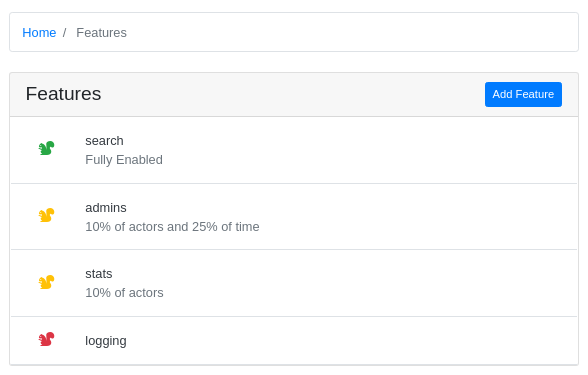
Viewing an individual feature:
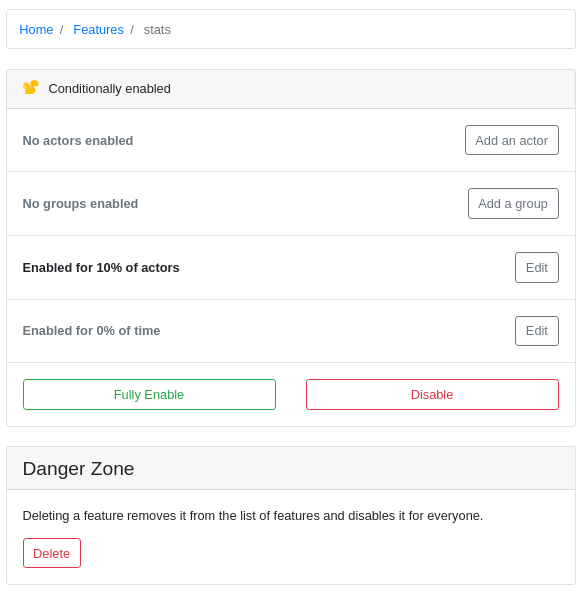
Installation
Add it to your application's Gemfile with:
$ bundle add flipper-ui
Or install it yourself as:
$ gem install flipper-ui
Usage
Rails
Given that you've already initialized Flipper as per the flipper readme, you can mount Flipper::UI to a route of your choice:
# config/routes.rb
YourRailsApp::Application.routes.draw do
mount Flipper::UI.app(Flipper) => '/flipper'
end
If you'd like to lazy load flipper, you can instead pass a block to initialize it:
# config/routes.rb
YourRailsApp::Application.routes.draw do
flipper_block = lambda {
# some flipper initialization here, for example:
adapter = Flipper::Adapters::Memory.new
Flipper.new(adapter)
}
mount Flipper::UI.app(flipper_block) => '/flipper'
end
Security
You almost certainly want to limit access when using Flipper::UI in production.
Basic Authentication via Rack
The Flipper::UI.app method yields a builder instance prior to any predefined middleware. You can insert the Rack::Auth::Basic middleware, that'll prompt for a username and password when visiting the defined (i.e., /flipper) route.
# config/routes.rb
flipper_app = Flipper::UI.app do |builder|
builder.use Rack::Auth::Basic do |username, password|
# Verify credentials
end
end
mount flipper_app, at: '/flipper'
Route Constraints
It is possible to use routes constraints to limit access to routes:
# config/routes.rb
flipper_constraint = lambda { |request| request.remote_ip == '127.0.0.1' }
constraints flipper_constraint do
mount Flipper::UI.app => '/flipper'
end
Another example is to use the current_user when using a gem-based authentication system (i.e., warden or devise):
# initializers/admin_access.rb
class CanAccessFlipperUI
def self.matches?(request)
current_user = request.env['warden'].user
current_user.present? && current_user.respond_to?(:admin?) && current_user.admin?
end
end
# config/routes.rb
constraints CanAccessFlipperUI do
mount Flipper::UI.app(Flipper) => '/flipper'
end
Standalone
Minimal example for Rack:
# config.ru
require 'flipper/ui'
adapter = Flipper::Adapters::Memory.new
flipper = Flipper.new(adapter)
run Flipper::UI.app(flipper) { |builder|
builder.use Rack::Session::Cookie, secret: "something long and random"
}
The key is that you need to have sessions setup. Rails does this for you, so this step isn't necessary, but for standalone rack, you'll need it. Without sessions setup, you will receive a Runtime error like:
RuntimeError: you need to set up a session middleware *before* Rack::Protection::RemoteToken.
See examples/ui/basic.ru for a more full example
Configuration
Flipper UI can be customized via configure, which yields a configuration instance.
Description
We can associate a description for each feature by providing a descriptions source:
Flipper::UI.configure do |config|
config.descriptions_source = ->(keys) do
# descriptions loaded from YAML file or database (postgres, mysql, etc)
# return has to be hash of {String key => String description}
end
# Defaults to false. Set to true to show feature descriptions on the list
# page as well as the view page.
# config.show_feature_description_in_list = true
end
Descriptions show up in the UI like so:
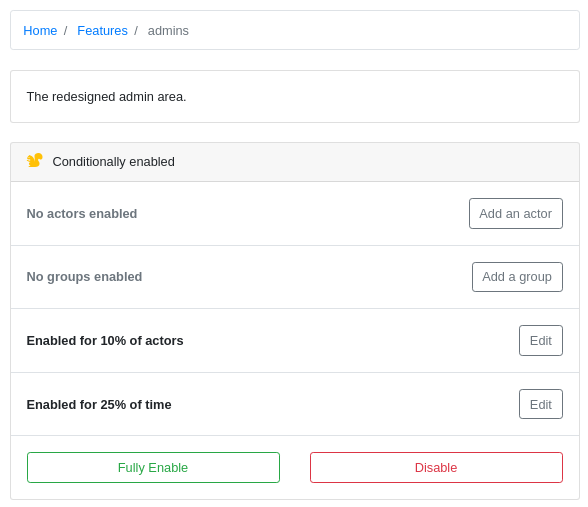
Banner
Flipper UI can display a banner across the top of the page. The banner_text and banner_class can be configured by using the Flipper::UI.configure block as seen below.
Flipper::UI.configure do |config|
config.banner_text = 'Production Environment'
config.banner_class = 'danger'
end
By default the environment is set to an empty string so no banner will show. If you wish to customize the look of the banner, you can set banner_class to one of the bootstrap color classes: primary, secondary, success, danger, warning, info, light, or dark. The default banner_class is danger.
The above configuration results in:
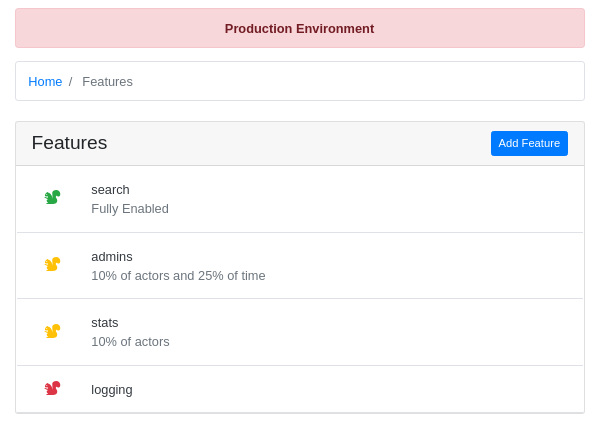
Actor names
Resolve actor ids to human-readable names by providing an actor names source:
Flipper::UI.configure do |config|
config.actor_names_source = ->(actor_ids) {
# Lookup actor_ids here and return hash, e.g.
{
"User;1" => "Dr. Paul Rhoades"
}
}
end
Fun mode
By default, Flipper UI displays a videoclip when there are no flags. The fun mode can be configured by using the Flipper::UI.configure block as seen below.
Flipper::UI.configure do |config|
config.fun = false
end
Import / Export
Flipper UI supports importing and exporting features. This is useful for sharing features between environments or backing up features.
- To export a backup file, click Download. This file can be shared with other developers or used to restore features to another environment. You can also import this file into Flipper Cloud for easy migration.
- To import a backup file, choose it from the Import form and click Import.
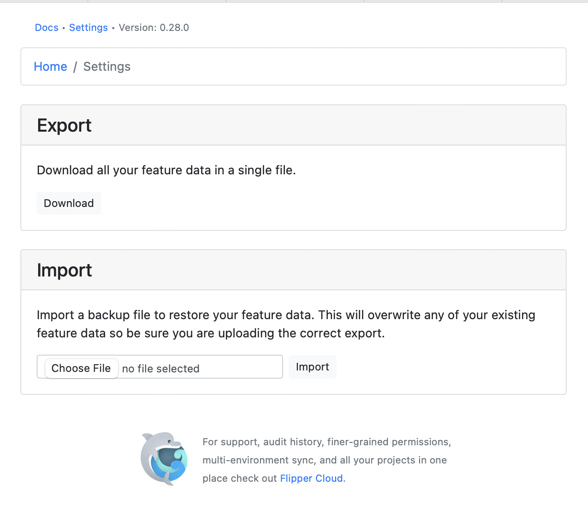
Get audit history, rollbacks, advanced permissions, analytics, and all of your projects in one place.
You can choose from several tiers to sponsor Flipper on GitHub and get some great benefits!